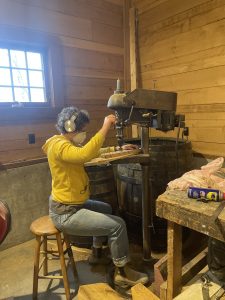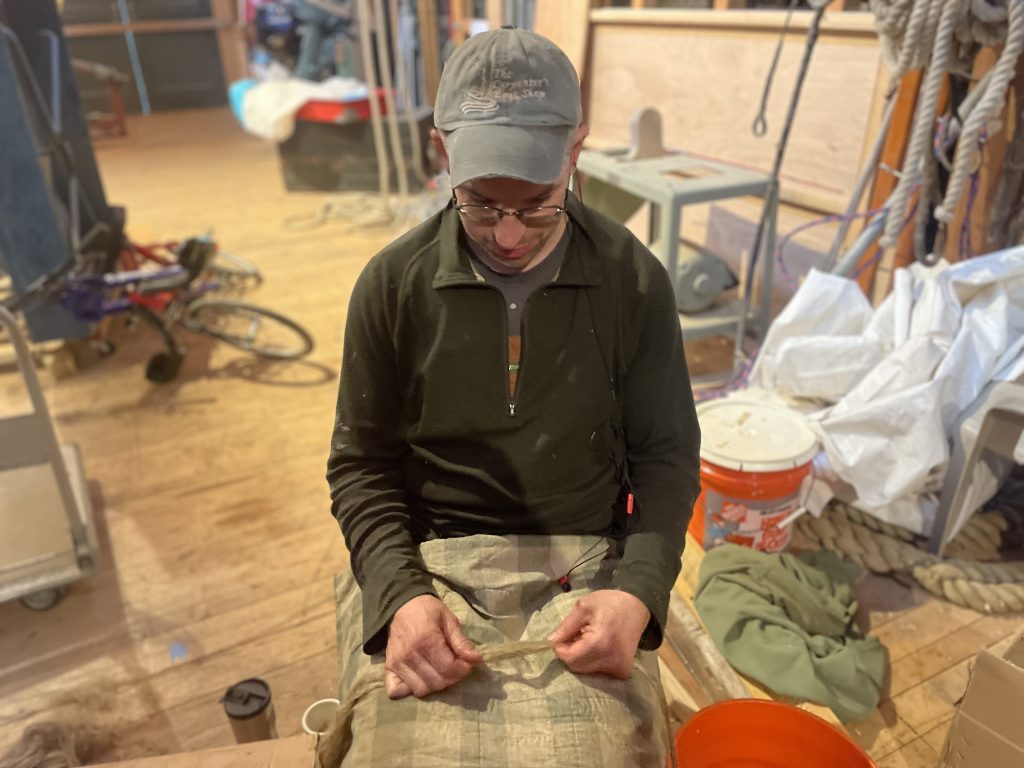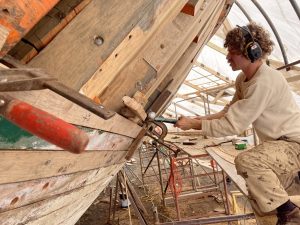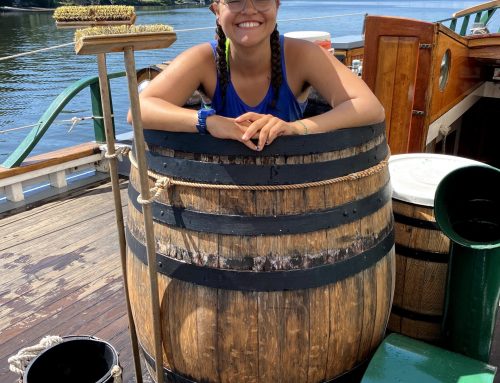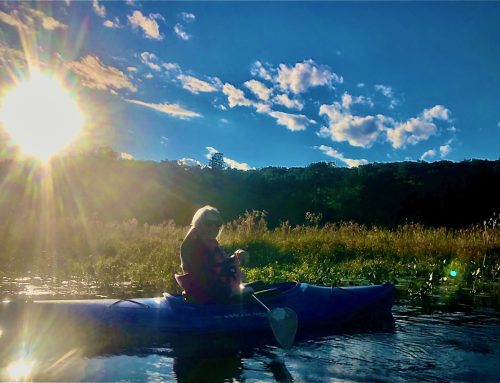Sloop Scoop 7: Planks, Planks, and More Planks
The sloop is getting sealed back up with new planks, each day a little closer to being water-ready. Here are a few of the key steps in making that happen:
After the frames are in place, it is time to plank. Planks are the long timbers that make the shape of the hull. In order to get the planks to form to the smooth, curved shape of the frames, they spend two to three hours in the steam box where propane heaters force gallons of water into the small space, heating and soaking the wood. After a while in the box, a plank becomes a wet noodle (or close to it!) and the crew is able to bend and twist it into place.
The planks are fastened into place with metal boat spikes. The heads of these fasteners cannot be left exposed to water, so they are covered with bungs. First the spikes are pounded in, recessed into the plank. Next circular wooden plugs are cut with a drill press (shown right). They are installed over the spike heads and then leveled out for a smooth surface.
